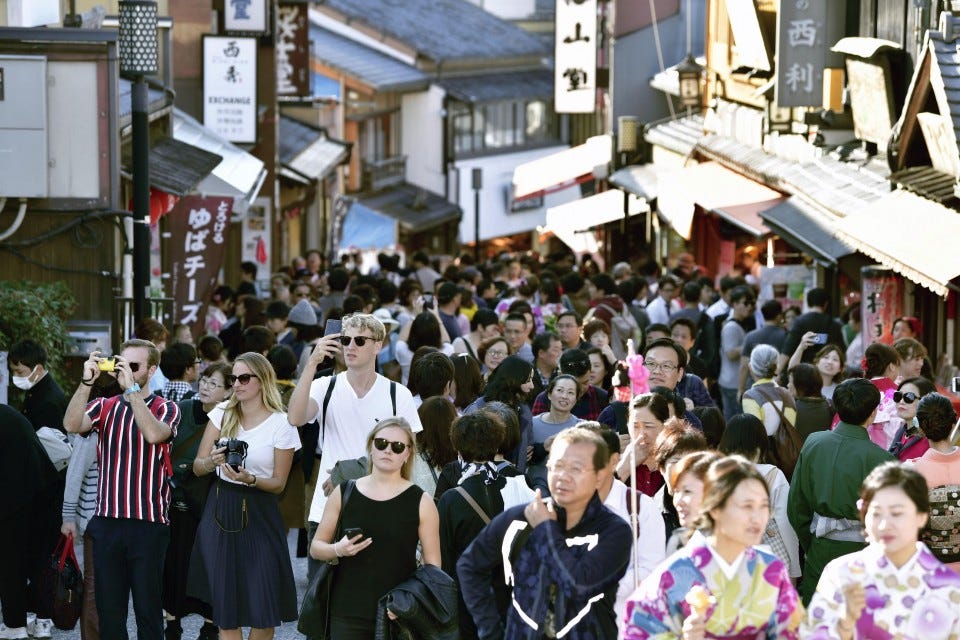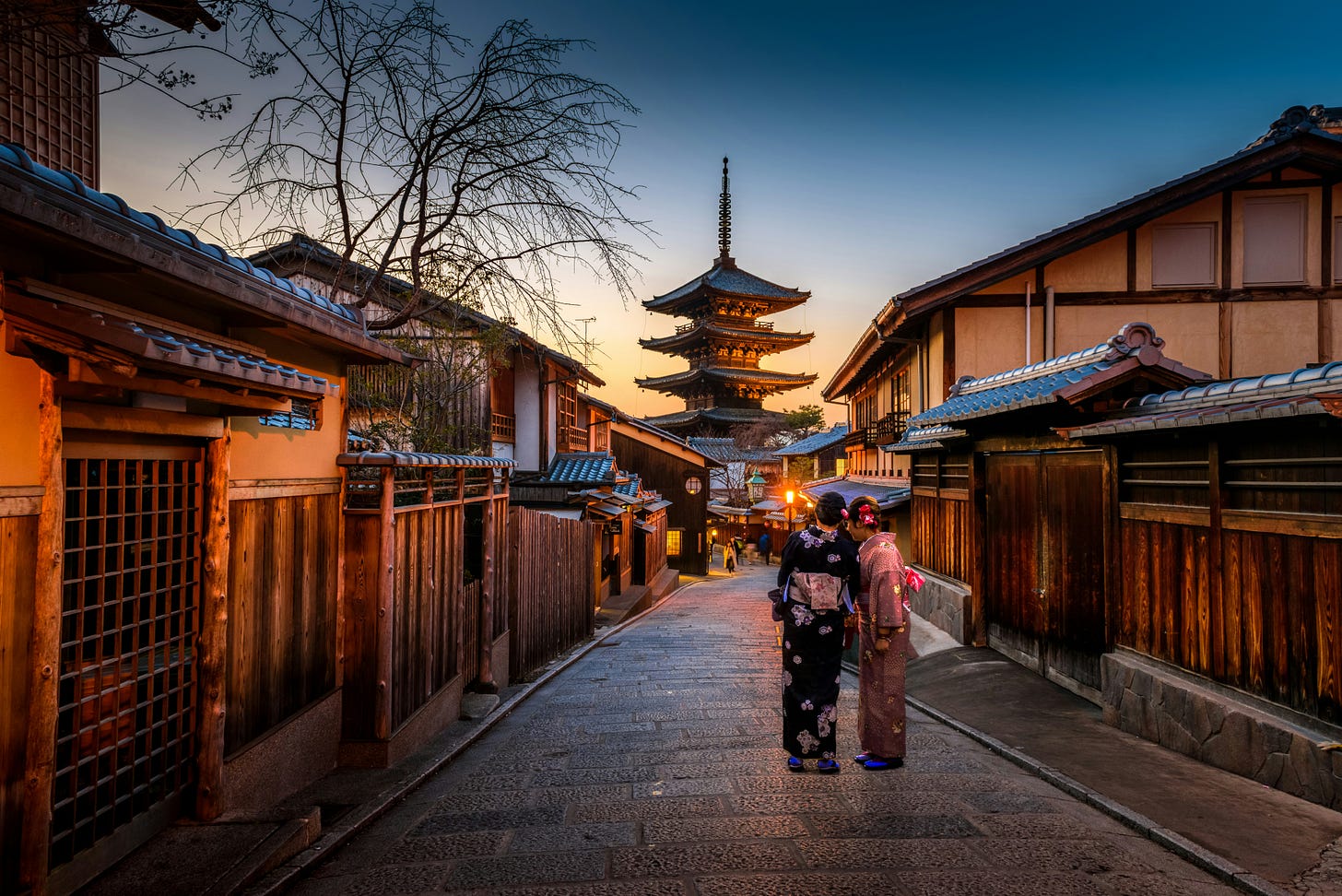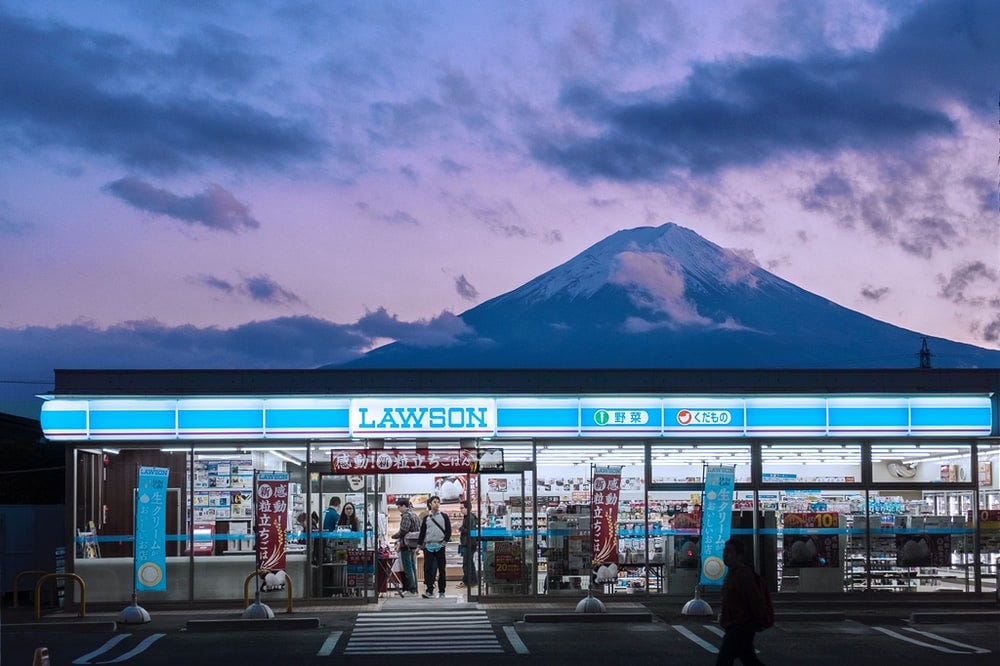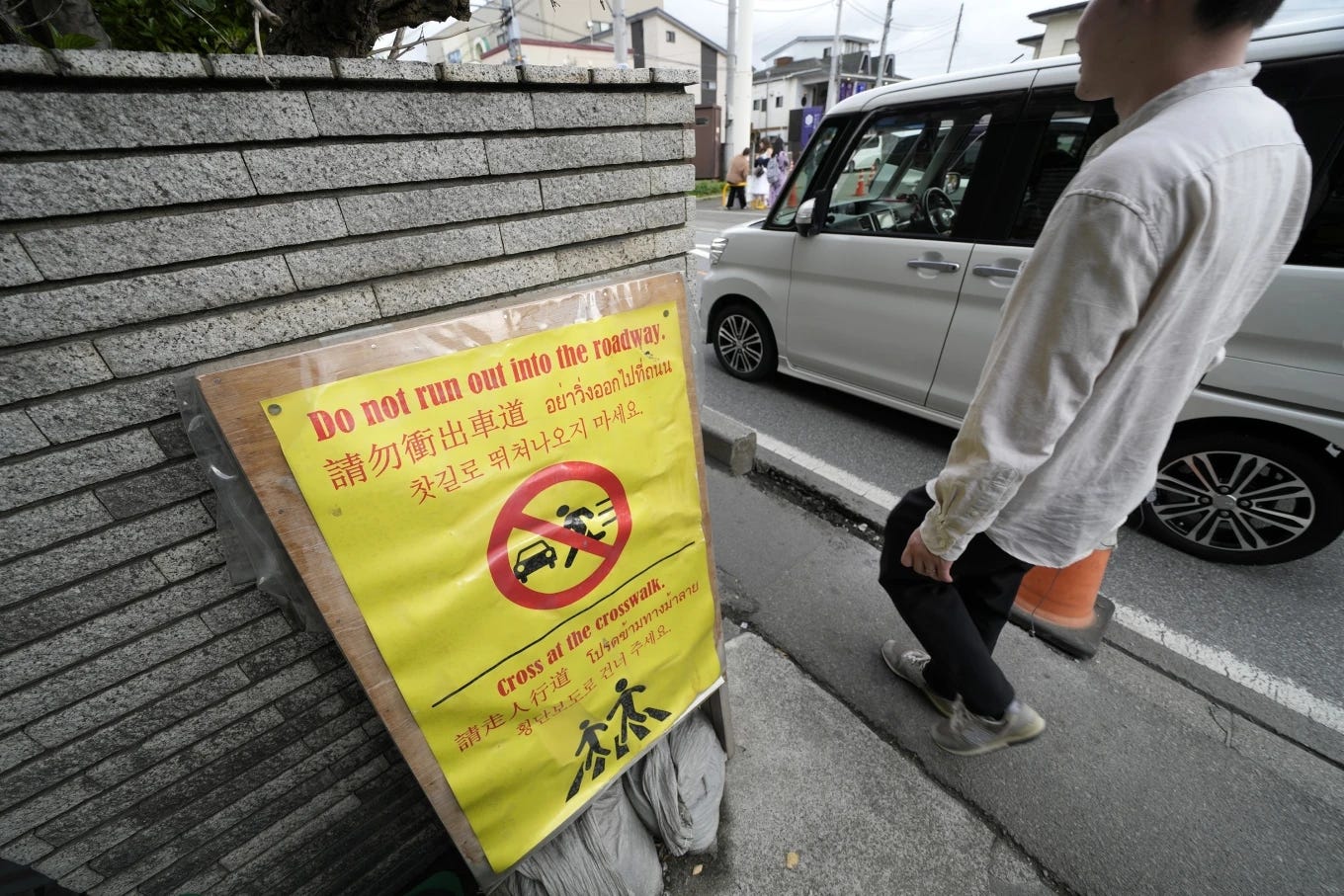Japan's problem with tourists
Many countries compete to attract tourists, while others have too many.
🏷️ Categories: History
Japan has a serious problem with tourists and is already taking measures.
The Land of the Rising Sun, known for its stunning landscapes, rich culture, and advanced technology, has experienced a massive increase in tourist arrivals in recent years. This surge has brought challenges for both local communities and the country's tourism ecosystem.
We live in an era of concern for sustainability; we want to ensure that our way of life is compatible with the future.
Is tourism truly sustainable as it is evolving?
What is overtourism?
It is the situation where a tourist destination receives such a high volume of visitors that it begins to negatively impact the quality of life of local residents, the experience of tourists, and the environment.
Here are the numbers of international tourists who visit Japan annually:
1. The problem in Kyoto
More than 50 million people visit Kyoto annually, including both domestic and international tourists (The Mainichi, 2020; Statista, 2023).
Traffic congestion
Tourist overcrowding makes it difficult to navigate the city, and public transportation is so crowded that locals find it impossible to go to certain places at certain times because tourists fill all the buses (The Japan Times, 2024).
"Not working for a day means losing easy money," says Hisashi Kobayashi, a taxi driver interviewed. Although his work is greatly benefited, he is aware that life in Kyoto has become bustling and is harming local residents despite the economic activity it generates (Hawaii Tribune, 2024).
Sustainability involves the economy, the environment, and society.
City cleanliness
Japan is known for having impeccable public spaces, although it is becoming a complicated task due to the large number of visitors (Silanteva, 2024). Tourists are also not as careful as locals in cleaning up public spaces.
Saturated hospitality sector
Another issue many locals complain about is the exaggerated increase in prices for booking a hotel room or eating at a restaurant (Hawaii Tribune, 2024). The yen, Japan's currency, has a lower value compared to other currencies, allowing tourists to afford higher prices than locals.
Lack of respect
Locals have also expressed their discomfort with the lack of respect towards them and their culture. Many eat on the street while walking, a frowned-upon action in Japanese culture, while others chase geishas to take photos with them (Mami, 2022; Hawaii Tribune, 2024), as if they were just another monument to take a picture with.
Measures taken:
Tourist buses: A bus line exclusively for tourists has been created, with stops at the most popular attractions, aiming to relieve the pressure on buses used by local residents (The Japan Times, 2024).
Temporal diversification: Other times of the year and day are being promoted. For example, morning and off-season tourism are being promoted, offering special experiences such as breakfast at Nijo Castle during summer mornings, which has helped reduce congestion during peak hours (Mami, 2022).
Geographical diversification: To avoid the concentration of tourists in the same places, lesser-known destinations and alternative routes are being promoted. Areas like the Fushimi district in Kyoto have started offering tours to sake breweries, attracting tourists interested in more authentic experiences away from the usual crowds (Mami, 2022).
2. The infamous fence to block the view of Mount Fuji
Fujikawaguchiko is a small town that has gone viral on social media for its views of Mount Fuji. Such has been the massive influx to this spot that they have had to install a fence to block the most popular view and thus attempt to reduce the daily avalanche of people.
This is how the place looked before:
This is how it looks now, if you can see anything:
The increase in tourists seeking the perfect photo had led to chaotic situations.
There were tourists climbing to dangerous places, suddenly crossing the street at risk of being run over, leaving garbage regardless of the rules, and arriving at 4 or 5 in the morning to wait for the sunrise while making noise and waking up residents (CBS News, 2024; ABC News, 2024).
"I'm really glad that foreigners come to our town," says 73-year-old lifelong Fujikawaguchiko resident Kikue Katsumata. "But when it comes to taking photos from here, the road is a bit narrow and it can be dangerous when people cross running without using the pedestrian crossing" (CBS News, 2024).
3. Restrictions for climbing Mount Fuji
This summer of 2024 marks the beginning of restrictions due to overtourism on Mount Fuji (Mount Fuji Climbing Official Web Site, 2024).
A reservation system has been created where hikers must choose whether they want to take a day trip or spend the night in the various shelters available along the trail. Only 4000 people will be allowed entry per day.

Final Reflection
Japan's situation makes us reflect on the need to find a sustainable balance between economic development through tourism, the preservation of cultural heritage, and the quality of life of local residents.
Tourists also play a crucial role in this balance, being aware of their impact and respecting local rules and customs.
I live in a tourist area and empathize with what happens in Kyoto.
Every summer is a challenge to take the bus here; my daily commutes become complicated. Sometimes I can't take the bus because it's completely full, and it's almost always delayed due to confusion, questions, and the constant movement of passengers at each stop.
✍️ Quote of the day: "I have found out that there ain't no surer way to find out whether you like people or hate them than to travel with them." - Mark Twain in Tom Sawyer Abroad.
See you in the next letter, take care 👋
References 📚
ABC News. (2024, 29 mayo). Holes found in Japanese town’s screen blocking tourists from taking photos of Mount Fuji. https://www.abc.net.au/news/2024-05-29/holes-found-in-screen-used-to-stop-people-taking-mt-fuji-photos/103906396
CBS News. (2024, 30 mayo). Japan town that blocked view of Mount Fuji already needs new barrier, as holes appear in mesh screen. CBS News. https://www.cbsnews.com/news/mount-fuji-japan-fujikawaguchiko-blocks-view-but-already-has-holes-in-barrier/
Hawaii Tribune. (2024, 10 junio). Japan likes tourists, just not this many - Hawaii Tribune-Herald. Hawaii Tribune-Herald. https://www.hawaiitribune-herald.com/2024/06/10/nation-world-news/japan-likes-tourists-just-not-this-many/
Japan-bound Statistics - Tourism Statistics [Base de datos]. En JTB Tourism Research. https://www.tourism.jp/en/tourism-database/stats/inbound/
Mami, M. (2022, 12 julio). Tourist Sites Tackle "Overtourism" NHK WORLD. https://www3.nhk.or.jp/nhkworld/en/news/backstories/264/
Mount Fuji Climbing Official Web Site. (2024, 10 mayo). For all Mt. Fuji climbers 2024. Fujisan. https://www.fujisan-climb.jp/en/for-every-climber.html
Statista. (2023, 4 agosto). Monthly count of tourists visiting Kyoto, Japan 2022. https://www.statista.com/statistics/1181024/japan-monthly-number-of-tourists-in-kyoto/
Silanteva, O. (2024). Japan takes action on overtourism. https://doi.org/10.59425/eabc.1708466400
The Japan Times. (2024, 2 junio). Overtourism-hit Kyoto launches new bus service for tourists. The Japan Times. https://www.japantimes.co.jp/news/2024/06/02/japan/society/kyoto-overtourism-new-bus-service/
The Mainichi. (2020, 18 junio). Kyoto Pref. had record 88 mil. visitors in 2019; virus pushing pivot to domestic tourists. The Mainichi. https://mainichi.jp/english/articles/20200618/p2a/00m/0na/025000c











This is a growing problem in small towns throughout western US. An old mining town in the mountains will become a major ski resort and thousands of people will descend upon the place on weekends, clogging grocery store aisles, being snarky to locals, and generally killing the attractiveness of the place. Soon, generational locals will move and foreign laborers will be hired through special programs to work in the shops and hotels. Soon, anything original in that town will be replaced by a faux replacement. Examples of this are Truckee, CA and Park City, UT.
I lived in Greece in the early 70’s. Tourism was definitely a part of the economy. The apartment building I lived in had a souvenir store on the first floor. It was only open when the buses of tourists would visit, an arrangement with the bus driver.
I recently saw a photo of lines of tourists waiting for the gates to open to get into the Acropolis. There have been general strikes protesting the number of tourists in the country.
Greece has no where near the infrastructure that Japan has. They also don’t have a tradition of respect anything like the Japanese, except perhaps in the churches.
I hope they manage to find a way to have tourism work in Japan.